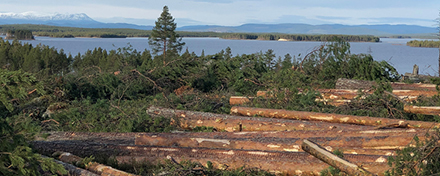This study examines forest ownership in the ECE (Europe) region. Based on data on 35 countries, and the first to include all forest ownership categories, this study investigates the changing nature and patterns of forest ownership, the ways in which governance and social structures influence forest owners and users, as well as forest management. Sources: Timberbiz, UNECE
Within the limits of data availability and harmonization, the publication provides an overview of, and a new baseline for, understanding the diversity and dynamics of forest ownership in the ECE region.
This study, based on data on 35 countries, and the first to include all forest ownership categories, looks at the changing nature of forest ownership, explores its causality, and sheds light on the ways in which governance and social structures affect both owners and users, as well as management of forests.
Readers will benefit from a comprehensive overview of changes in ownership patterns in the ECE region. The ECE region, of course, has plenty of examples of changes in forest ownership and management policies, reflecting previous and recent social and political developments.
Some notable examples include countries with economies in transition, where radical changes in ownership patterns occurred through restitution and privatisation.
The study also features a cross-comparison of major ownership trends in the ECE region with trends in other regions and provides historical insight into processes that led to contemporary patterns of forest ownership. Those insights, more than anything else, reveal the deeply political and economic dimension of changing ownership patterns.
In order to better design and implement policies for sustainable forest management, we need to understand the context of changing forest ownership, but also the situation and needs of forest owners.
The full paper can be downloaded Who Owns Our Forests? Forest ownership in the ECE region






